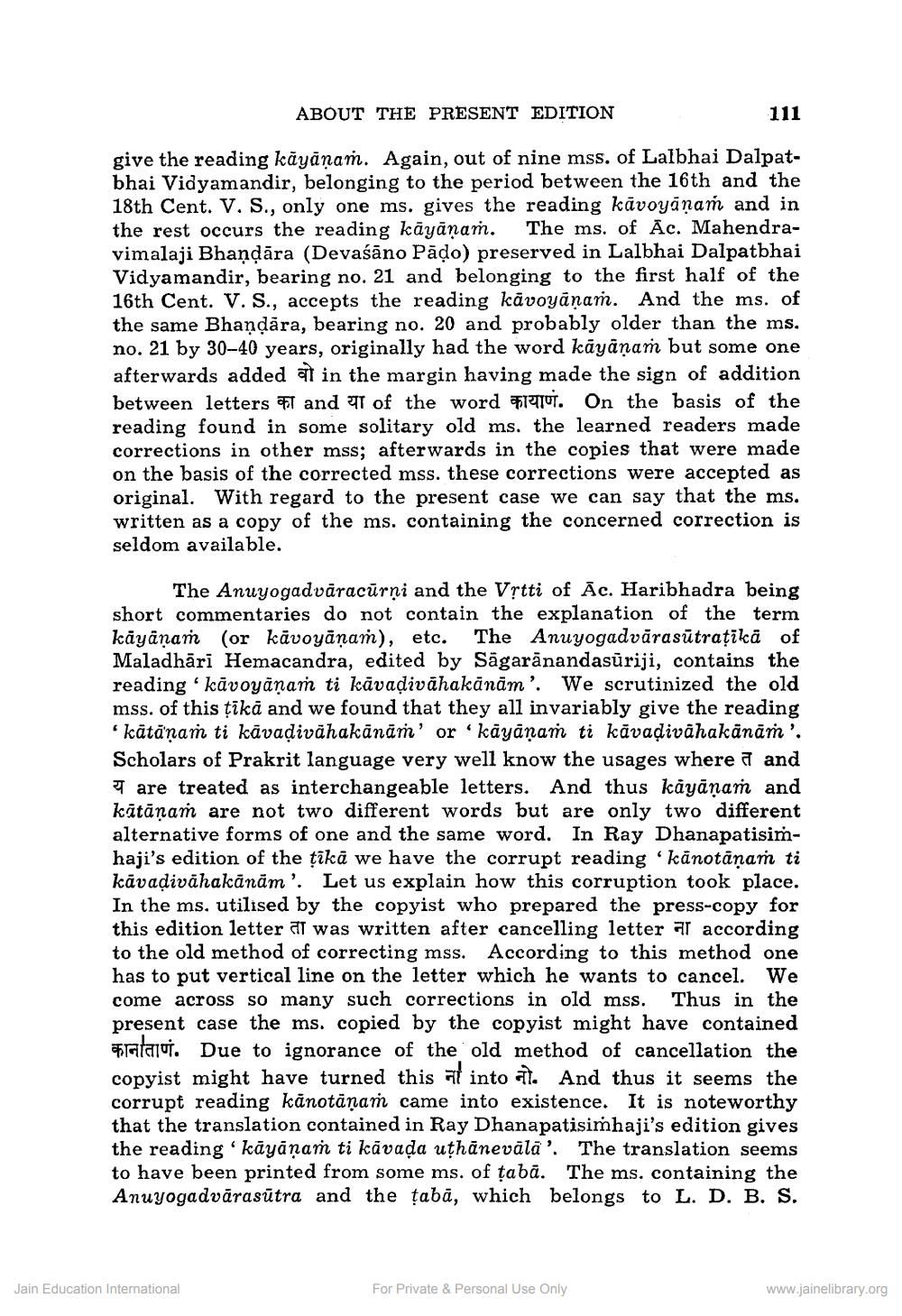________________
ABOUT THE PRESENT EDITION
111
give the reading käyānam. Again, out of nine mss. of Lalbhai Dalpatbhai Vidyamandir, belonging to the period between the 16th and the 18th Cent. V, S., only one ms. gives the reading kāvoyanaṁ and in the rest occurs the reading kāyānam. The ms. of Ac. Mahendravimalaji Bhandara (Devaśāno Pādo) preserved in Lalbhai Dalpatbhai Vidyamandir, bearing no. 21 and belonging to the first half of the 16th Cent. V. S., accepts the reading kavoyānam. And the ms. of the same Bhandāra, bearing no. 20 and probably older than the ms. no. 21 by 30-40 years, originally had the word kāyānam but some one afterwards added al in the margin having made the sign of addition between letters of and IT of the word #1910T. On the basis of the reading found in some solitary old ms. the learned readers made corrections in other mss; afterwards in the copies that were made on the basis of the corrected mss. these corrections were accepted as original. With regard to the present case we can say that the ms. written as a copy of the ms. containing the concerned correction is seldom available.
The Anuyogadvāracūrņi and the Vrtti of Ac. Haribhadra being short commentaries do not contain the explanation of the term kāyānam (or kāvoyāņam), etc. The Anuyogadvārasūtraţika of Maladhārī Hemacandra, edited by Sāgarānandasūriji, contains the reading "kāvoyāņam ti kāvadivāhakānām'. We scrutinized the old mss. of this tikā and we found that they all invariably give the reading
kätānam ti kāvadivähakānām' or kāyaṇam ti kāvadivahakānāṁ'. Scholars of Prakrit language very well know the usages where a and I are treated as interchangeable letters. And thus kāyāņam and kātānam are not two different words but are only two different alternative forms of one and the same word. In Ray Dhanapatisimhaji's edition of the ţikā we have the corrupt reading "kānotānañ ti kāvadivāhakānām'. Let us explain how this corruption took place. In the ms, utilised by the copyist who prepared the press-copy for this edition letter at was written after cancelling letter at according to the old method of correcting mss. According to this method one has to put vertical line on the letter which he wants to cancel. We come across so many such corrections in old mss. Thus in the present case the ms. copied by the copyist might have contained fratani. Due to ignorance of the old method of cancellation the copyist might have turned this all into l. And thus it seems the corrupt reading kānotānam came into existence. It is noteworthy that the translation contained in Ray Dhanapatisimhaji's edition gives the reading' kāyāņam ti kāvada uthanevāla'. The translation seems to have been printed from some ms. of tabā. The ms. containing the Anuyogadvārasūtra and the tabā, which belongs to L. D. B. S.
Jain Education International
For Private & Personal Use Only
www.jainelibrary.org




